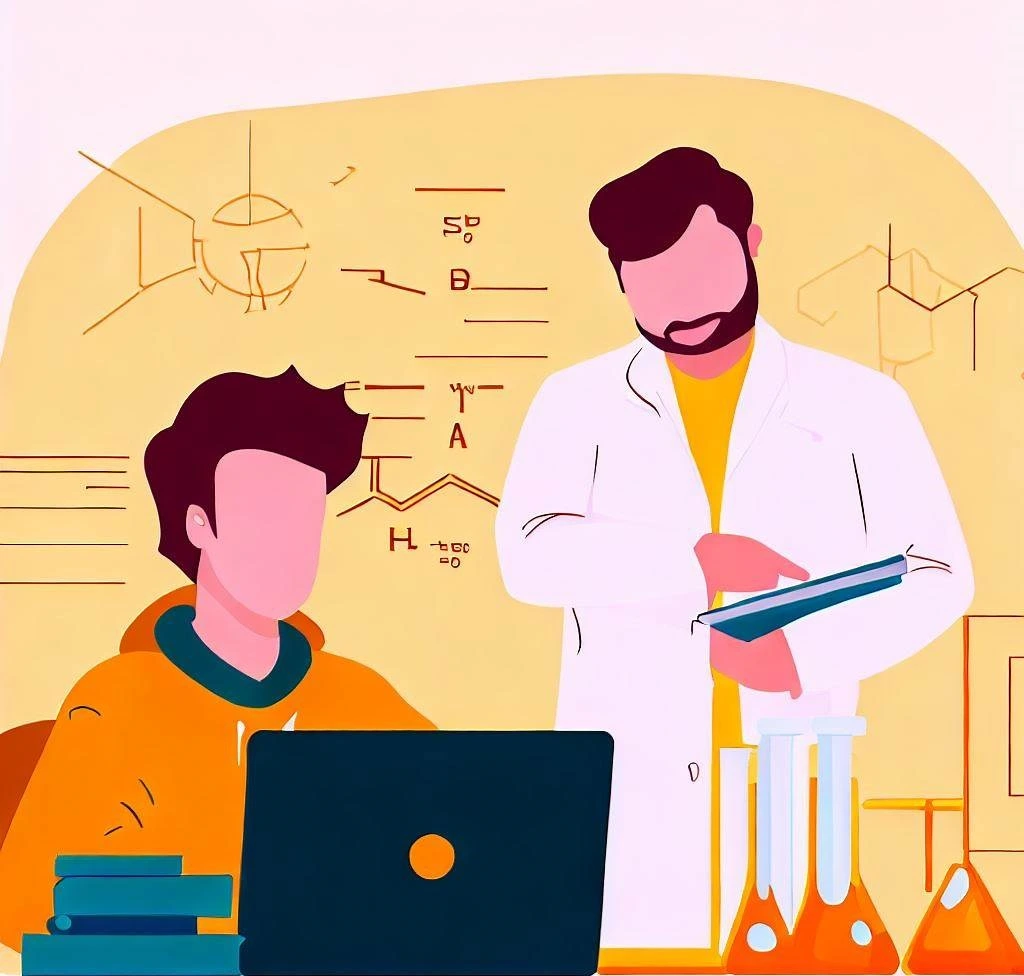Excelling in Thermodynamics: Strategies for Tackling Complex Assignment Problems


Building a Strong Foundation
Having a solid understanding of thermodynamics is essential for solving challenging assignment problems. Learn about the basic principles of thermodynamics, including the idea of absolute zero temperature, the conservation of energy, the increase of entropy, and the increase of entropy. It is also crucial to comprehend fundamental thermodynamic terms and formulas, including temperature, pressure, volume, and the ideal gas law. You can further your understanding of the topic by arming yourself with knowledge of phase diagrams, equilibrium, and thermodynamic calculations. You can build the skills you need to approach and accurately solve challenging thermodynamics problems by devoting time and effort to gaining a solid understanding of these fundamental concepts. For complex assignment problems, a firm grasp of thermodynamics' fundamental ideas is necessary. Three crucial areas are listed below:
- The Three Laws of Thermodynamics Must be Understood In Order to Solve Problems Involving Thermodynamics:
- Thermodynamic Properties and Equations
- Phase Diagrams and Equilibrium
1st Law of Thermodynamics:
The law of energy conservation, which states that energy can only be transferred or converted from one form to another and cannot be created or destroyed.
2nd Law of Thermodynamics:
The law of thermodynamics is the law of entropy, which states that an isolated system's overall entropy always rises over time.
3rd Law of Thermodynamics:
Law of thermodynamics states that the entropy of a pure crystalline substance is zero at absolute zero temperature.
You can comprehend and solve challenging thermodynamics problems by having a solid understanding of these laws.
Learn about the various thermodynamic attributes, including enthalpy, volume, pressure, and temperature. The behavior of systems under study is described and quantified using these properties. Additionally, become familiar with crucial equations like the Van der Waals equation, Clausius-Clapeyron equation, and the ideal gas law since these are frequently used in thermodynamics problem-solving.
Phase diagrams show how substances behave under various pressures and temperatures. Learn how to read phase diagrams effectively and comprehend terms like phase transitions, critical points, and triple points. Understand the idea of chemical equilibrium and how it relates to thermodynamic calculations because equilibrium plays a significant role in thermodynamics.
Problem-Solving Strategies
When dealing with challenging thermodynamics assignment problems, developing efficient problem-solving techniques is crucial. Determine the type of problem you are dealing with, such as heat transfer or equilibrium, by thoroughly understanding the given problem, identifying known and unknown variables, and understanding the problem at hand. The next step is to take a methodical approach that entails representing the system with clear diagrams, using pertinent thermodynamic principles, creating pertinent equations, and solving for the desired quantity. Double-checking your calculations is essential, paying close attention to important numbers and units. Furthermore, accuracy is ensured by assessing the reasonability of your solution and contrasting it with the problem statement. Additional techniques that support effective problem-solving in thermodynamics include consistent practice, asking for assistance when necessary, and making an effort to comprehend the underlying physical principles behind formulas and equations. You can confidently navigate challenging thermodynamics problems using these techniques, and you'll get the best grades on your assignments. Here are two effective strategies for solving challenging thermodynamics assignment problems:
- Understand the Given Problem
- Use a Systematic Approach
Make sure you comprehend the information in the problem statement by carefully reading and analyzing it. Decide the type of problem you are dealing with (for example, heat transfer, work calculation, equilibrium constant determination, etc.) and list the known and unknown variables. Before continuing, clarify any unclear or perplexing aspects of the issue. H3: 2. Employ a Systematic Approach
To solve complex thermodynamics problems, it is crucial to follow a systematic approach. Here's a step-by-step strategy you can employ:
Step 1: Draw a Diagram: Sketch a clear diagram representing the system and its surroundings. Label the relevant variables and indicate the direction of energy flow.
Step 2: Identify the Thermodynamic Principles: Determine which laws and principles are applicable to the problem. Consider conservation of energy, entropy changes, and any relevant thermodynamic equations.
Step 3: Set Up the Equations: Write down the equations that relate the known and unknown variables. Substitute the given values and rearrange the equations to solve for the desired quantity.
Step 4: Solve the Equations: Perform the necessary calculations using appropriate units and numerical values. Pay attention to significant figures and units throughout the solution.
Step 5: Check for Reasonableness: Evaluate the obtained solution for reasonableness. Does it align with your expectations based on the problem statement? Review your calculations and ensure accuracy.
Additional Tips for Success
To succeed in completing thermodynamics assignments, there are several extra strategies to consider in addition to the fundamental information and problem-solving techniques. The first step is to practice regularly. Regularly practice problem-solving techniques to solidify your comprehension and advance your abilities. Don't be afraid to ask for assistance when needed and work with colleagues, teachers, or online resources. Clarity can be greatly improved by considering various perspectives and insights. Additionally, rather than relying solely on memorization, try to understand the physical meaning behind thermodynamic concepts. You are able to apply the principles to various problem scenarios more successfully thanks to this deeper understanding. Finally, improving your overall efficiency and productivity can be accomplished by remaining organized, using effective time management techniques, and breaking down challenging issues into smaller, more manageable steps. You can enhance your learning and succeed in mastering thermodynamics by incorporating these additional suggestions into your study routine. Here are three additional suggestions to help you succeed in your thermodynamics assignments in addition to the fundamental information and problem-solving techniques:
- Practice, Practice, Practice
- Seek Help and Collaborate
- Understand the Physical Meaning
It takes consistent practice to become an expert in thermodynamics. Work through a range of problem sets, from easy to difficult. Your comprehension of various concepts will increase, and your capacity for problem-solving will improve.
Don't be afraid to ask for assistance when you need it. To get more information and clarification, talk to your professors, peers, or online resources. You can gain new perspectives and deepen your understanding by working together with peers and talking about problems.
Try to comprehend the physical meaning behind equations and formulas rather than memorizing them. Understanding the underlying ideas will help you apply them more skillfully and modify them to fit different problem scenarios.
Conclusion
In conclusion, a solid foundation, problem-solving techniques, and additional success advice are necessary for mastering thermodynamics and successfully resolving challenging assignment problems. You lay the foundation for solving difficult problems by developing a solid understanding of the laws of thermodynamics, thermodynamic properties and equations, phase diagrams, and equilibrium. A structured and efficient solution process is made possible by using problem-solving techniques like understanding the given problem, taking a systematic approach, and checking for reasonableness. Incorporating additional suggestions, such as regular practice, seeking assistance and working with others, comprehending the physical significance of concepts, and maintaining organization, improves your overall learning experience and maximizes your capacity to succeed in thermodynamics. You will develop the confidence and abilities necessary to handle even the most challenging assignment problems by adhering to these recommendations and devoting time and effort to mastering thermodynamics. Remember that you can overcome any obstacles in the way of your academic success in the field of thermodynamics if you are committed, persistent, and have a solid grasp of the material. The road to mastering thermodynamics and completing challenging assignments is not an easy one, but it is undoubtedly attainable with the appropriate strategy and frame of mind. You lay the groundwork for success by developing a solid understanding of the laws, characteristics, and equations that govern thermodynamics. You can handle even the most challenging thermodynamics problems by adopting effective problem-solving techniques, such as comprehending the issue, using a methodical approach, and making sure calculations are accurate. But it doesn't end there. Your skills will advance if you adopt additional success strategies like regular practice, seeking assistance and working with others, comprehending the physical significance of the concepts, and maintaining organization. These suggestions will improve your comprehension and problem-solving skills while also increasing your productivity and overall effectiveness. You can overcome the difficulties presented by difficult thermodynamics assignment problems and turn into a self-assured and competent thermodynamics student by applying commitment, perseverance, and a growth mindset. Keep in mind that every issue you resolve moves you one step closer to mastery and gives you more tools to solve the intriguing mysteries of thermodynamics. In order to truly master thermodynamics, embrace the journey, the difficulties, and the opportunity.